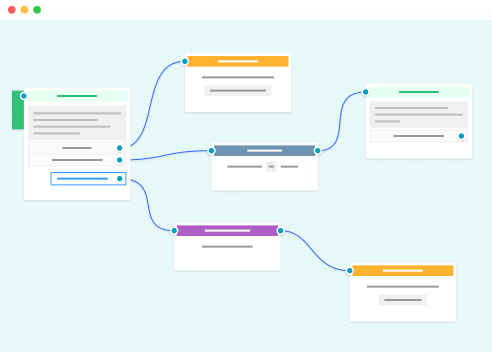


It’s no surprise that so many companies want to join the bandwagon. How much can chatbots help companies increase their sales?īusiness Insider Intelligence report predicts that global retail consumer spending via chatbots will reach $142 billion by 2024. The average ROI for chatbots would be 1,275% (and that’s just support cost savings).īut the chatbot industry itself is only the tip of the iceberg. If we look at this number from the perspective of the projected global chatbot market size of $0.8 billion (for 2023), it looks really promising. Are chatbots effective?īusinesses fell in love with chatbots precisely because they are incredibly efficient and can handle a large number of requests simultaneously.Īccording to projections from Juniper Research, the total cost savings from deploying chatbots will reach $11 billion by 2023. That’s because they often have fewer resources and need to find more efficient ways to connect with their customers. But we found that small businesses are willing to embrace the technology at a faster rate than larger businesses. But it is worth taking a closer look at the chatbot usage among companies of various sizes, too.īusinesses of all sizes can benefit from chatbot technology.

Right now, chatbots are used by about 19% of businesses. What percentage of businesses use chatbots? This forces them to tailor their own in-house solution and makes the development process much longer. On the other hand, larger businesses tend to take a more strategic approach. It is very easy to add a third-party customer service bot powered by one of the popular chatbot builders. With its current compound annual growth rate (CAGR) of about 22%, we can expect this number to reach 3 billion dollars by the end of this decade.Ĭurrently, chatbots are widely adopted by smaller businesses. This allows chatbot designers to control the user experience, conversation flow, and response rates for different message choices.Īccording to a report from Fortune Business Insights, in 2022 the chatbot market will grow to $721 million. Almost all cases and scenarios are resolved within a few messages. Most chatbot conversations are short and to the point.Most consumers think that more companies should take advantage of chatbots because 24h/7 support and fast replies are essential for modern businesses.Ībout 90% of customer queries are resolved in 10 messages or fewer What’s more, 7 out of 10 find the experience positive. A whopping 88% of web users chatted with chatbots in the previous year. It is no exaggeration to say that chatbots are a mainstream technology.However, most online shoppers would prefer not to have this option and use a self-service chatbot instead of waiting.Īlmost 9/10 customers had at least one conversation with a chatbot in 2021 It is a good idea to provide this option as well. There are some customers who always prefer human interaction.If the alternative was to wait 15 minutes for an answer, 62% of consumers would rather talk to a chatbot than a human agent Being put on hold or waiting for a reply was selected as extremely frustrating by 53% of our respondents. But there’s something that annoys consumers even more. Rude agents, having to describe the problem multiple times, and the necessity to ask for assistance repeatedly, don’t make a great customer experience.Our survey revealed that: About 53% of respondents find waiting too long for replies the most frustrating part of interacting with businesses Their ability to handle a wide range of tasks makes them an attractive option for ecommerce stores, b2b companies, real estate, or even healthcare. In addition to customer service and data collection, chatbots will be used in other areas such as marketing, human resources, and operations. One of the most apparent chatbot trends for 2022 is that their use will become even more widespread.
CHATBOT BUILDER STATS FOR FREE

Effectiveness of virtual assistants and artificial intelligence.AI technology trends in ecommerce and customer service.Up-to-date chatbot usage statistics and adoption rates.We surveyed 774 online business owners and 767 customers to find out what are the current chatbot trends. It is a perfect moment to explore the attitudes towards chatbots among companies and online shoppers. Our study confirmed that about 88% of customers had at least one conversation with a chatbot within the past year.īut what does this mean for businesses? Especially those who haven’t yet adopted chatbots into their marketing or customer service? And the numbers don’t lie-they’re growing in popularity, usage, and reach.


 0 kommentar(er)
0 kommentar(er)
